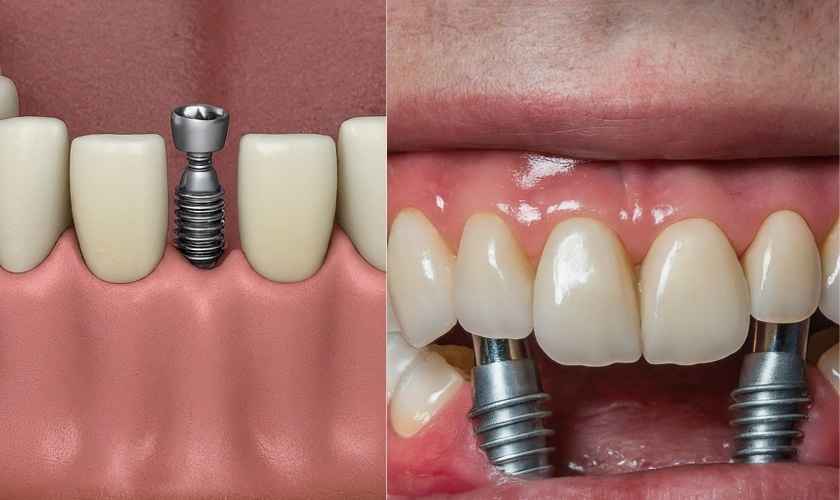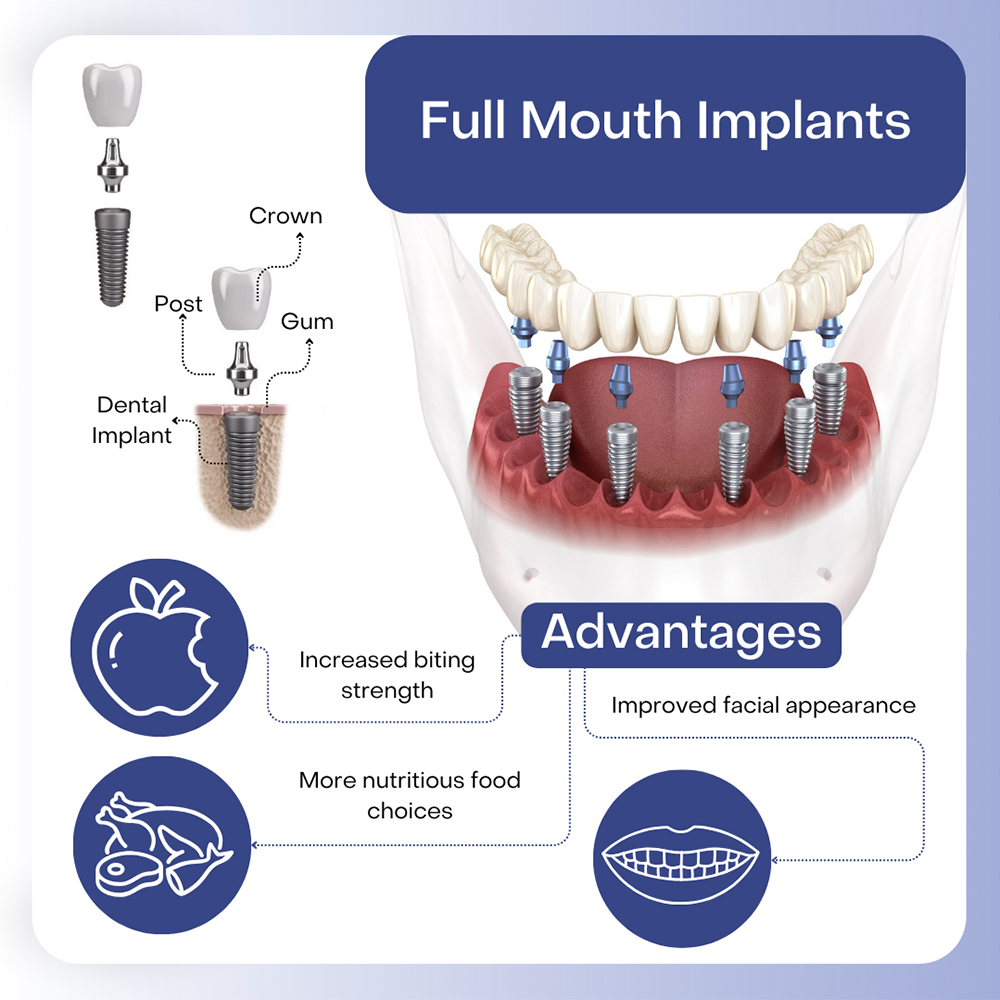7 Simple Techniques For Dental Sense
Table of ContentsNot known Facts About Dental SenseHow Dental Sense can Save You Time, Stress, and Money.An Unbiased View of Dental SenseDental Sense - Truths
are medical tools surgically implanted right into the jaw to bring back a person's capability to eat or their look. They give support for fabricated (phony) teeth, such as crowns, bridges, or dentures. When a tooth is shed as a result of injury or disease, an individual can experience difficulties such as quick bone loss, malfunctioning speech, or adjustments to chewing patterns that lead to pain.Oral dental implant systems contain an oral implant body and oral implant abutment and might additionally include an abutment addiction screw. Front tooth filling. The oral implant body is surgically placed in the jawbone in place of the tooth's root. The dental implant abutment is usually affixed to the implant body by the abutment addiction screw and extends through gum tissues right into the mouth to support the connected fabricated teeth
(https://www.twitch.tv/dentalsense1/about)Structure of The Oral Implant System choosing dental implants, speak to your oral copyright about the potential advantages and dangers, and whether you are a prospect for the procedure. Points to think about: Your total health and wellness is an essential factor in identifying whether you are an excellent candidate for dental implants, for how long it will take to recover, and how long the dental implant might remain in area.
Cigarette smoking may influence the healing process and lower the long-term success of the dental implant. The recovery procedure for the implant body might take several months or longer, throughout which time you usually have a short-lived abutment instead of the tooth. the oral implant treatment: Meticulously follow the oral hygiene directions offered to you by your dental service provider.
Excitement About Dental Sense
Implant failure can lead to the requirement for an additional surgical procedure to repair or change the dental implant system. Brings back the capacity to chew Recovers aesthetic appearance Helps maintain the jawbone from reducing as a result of bone loss Protects the wellness of the bordering bone and gum tissues Helps keep nearby (neighboring) teeth steady Improves lifestyle Damages to bordering natural teeth throughout dental implant placement Injury to the surrounding tissues throughout surgical treatment, such as sinus perforation Injury throughout surgical treatment (for instance, crack of bordering jawbone) Inadequate feature, such as feeling like the teeth do not bite with each other typically A sensation that the tooth is loosened or twisting in position resulting from an abutment screw loosening up Implant body failure (looseness of the dental implant body) because of systemic infection, which might be more most likely in patients with uncontrolled diabetics issues because of local infection in bone and gums sustaining the dental implant body due to delayed healing, which might be extra most likely in clients who smoke Difficulty cleaning up the periodontals around the dental implant, causing inadequate dental hygiene Without treatment periodontal disease Post-surgical feeling numb as a result of go to the website nerve impingement or damage Constantly alert health and wellness care carriers and imaging technicians that you have oral implants before any type of magnetic vibration imaging (MRI) or x-ray procedures.
FDA is not knowledgeable about any type of negative events reported for MRI or x-ray procedures with oral implants. Oral implants systems are typically constructed from products that adhere to international agreement requirements of the International Company for Standardization (ISO) or ASTM International. These criteria have information of what makes a secure material.

An oral implant is a structure that changes a missing tooth. With screw-like tools, the surgeon inserts a dental implant right into the jawbone, and it acts as an anchor for an artificial tooth, called a crown.
Getting My Dental Sense To Work
Some people are not eligible for oral implant surgery. It is for oral specialists to operate individuals with: intense illnessuncontrollable metabolic diseasebone or soft tissue disease or infectionIf these concerns are solved, an individual can have the surgical procedure. In, oral cosmetic surgeons refrain from running on people with: If people with any one of the above undergo dental implant surgery, there is a higher danger of the dental implant stopping working.

Oral dental implant surgical treatment is a personalized procedure. Provide you time to recover. Connect the post and last crown, bridge or denture.
Next, your doctor will thoroughly place the dental implant right into your jaw. Finally, your cosmetic surgeon will rearrange your gums and shut the cut with stitches. If your implant is near the front of your mouth, your dentist will make a short-term tooth for you to wear until you heal. This way, you will not have a gap in your smile while you recoup.
Our Dental Sense Ideas
During the recovery phase, your jawbone must fuse to the oral implant. This process can take anywhere from three to nine months.
When your implant heals, your dental practitioner can affix the joint (tiny adapter message) and your final repair (crown, bridge or denture). This usually takes regarding one hour to complete and may require a second small surgery. You should not really feel any kind of discomfort throughout your oral implant procedure because your supplier will use medicine to numb your gums.